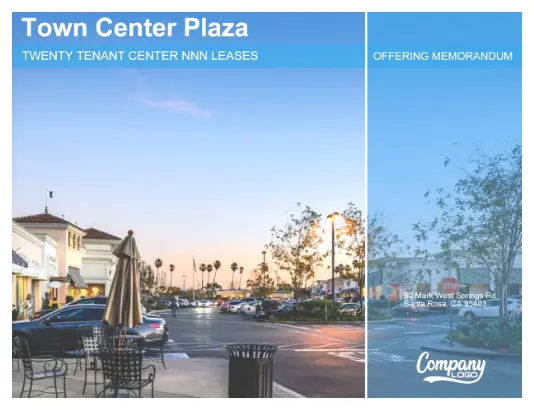The commercial real estate space has undergone serious changes over the past year, mainly as a result of the spread of Covid-19. Despite the fact that the global pandemic dramatically increased the pace of the changes, there is a common belief that the new trends were only pushed to unfold quicker but the process had already begun before the virus.
The pandemic has influenced the world in unprecedented ways and has shaped a new understanding of how people live and how businesses operate. The epidemic has inevitably led to an economic slowdown, which influenced commercial real estate with short-term changes like prices. The commercial real estate industry has managed to show more stability in comparison to other challenging periods like the 2008 recession.
While the need for social distancing resulted in less interest in renting commercial office spaces, a variety of new opportunities arose in 2021. In this article, we’ll explore the emerging commercial real estate trends to give you an overview of what you can expect from the industry.
Commercial real estate trends in 2021
There are a number of clear trends in the commercial real estate space that have emerged from 2020 and continue shaping the industry in 2021 and beyond. Although it’s not certain whether or not these trends are long-term or simply a result of a global pandemic and uncertain times. However, being informed about these significant changes will help you make the right decisions when it comes to selling your commercial real estate property or buying a new one.
1. Continued Demand for Industrial Properties
The first trend that is worth looking into is the continued interest in industrial properties in 2021. The Covid-19 pandemic has dramatically increased people’s preference for e-commerce and online shopping, leading to a rise in the demand for warehouses, fulfilment centres, and distribution hubs.
In the U.S., industrial vacancy rates dropped from 5.6% to 5.4% from 2020 to 2021. Factory and warehouse leases rose to 524 million square feet, showing a change of nearly 27% from a year ago. The rise in demand was popular across all sectors but the increase in online shopping, deliveries, and the growth of the e-commerce space is considered to have a significant impact.
To put things into perspective, a report shows that a $1 billion increase in incremental e-commerce spend results in an additional 1.25 million square feet of warehouse space required.
2. Growth of Multi-family Properties
Housing is among the highest priorities for individuals and is one of the first areas to consider reorganizing in times of economic instability and uncertainty. With the shifts that have resulted from the pandemic, a lot of people are not sure how the future will unfold in terms of their career stability.
Multi-family properties are more affordable and are popular for their low barrier of entry. These are the two main factors that make multi-family housing a popular solution in 2021. There are also signs that renters will continue showing a preference for suburban areas as opposed to central zones with high traffic.
The demand for multi-family properties is expected to remain high for apartment rentals, with forecasts for rent growth and vacancy rate increases. These types of properties are preferred by people of all ages as opposed to being an area of interest for baby boomers only. There are signs that people with more financial stability will continue showing interest in luxury properties. This means a shift from the suburbs to urban apartment living. This will require multi-family properties to provide more amenities to meet the new expectations.
3. Omnichannel sales for Retail Properties
The rise of omnichannel shopping is nothing new. However, if an omnichannel shopping experience was a nice-to-have extra before the pandemic, today it’s a must that most shoppers will require. It’s no longer enough to rely on physical shopping experiences and a storefront if you want to stay competitive.
Most parts of the world have already experienced a number of lockdowns, which has completely changed the way consumers shop. To avoid contact with others and ensure their safety, consumers prefer to shop from mobile devices, laptops, tablets, and other digital devices.
In 2021, the digital world is more active and popular than ever and businesses will be forced to implement a digital sales strategy and invest more in social media marketing.
4. Cleanliness Protocols & Increased Spacing
Considering that commercial real estate spaces offer a working environment for a number of individuals, keeping staff safe during an epidemic has given rise to a trend of new cleaning policies and spacing regulations.
If commercial spaces like offices, warehouses, restaurants, or retail shops are permitted to operate physically, they’ll need to ensure that they minimize the threat of contributing to the spread of Covid-19. To do this, businesses will need to reorganize their working environment to provide more space between employees. This may require moving to larger commercial real estate properties with more spacious offices or more rooms.
In addition, while maintaining good hygiene has always been a priority for businesses, in 2021 cleaning and disinfecting takes the center stage. Regular disinfection can eliminate bacteria and prevent the virus from spreading. Trends related to cleaning commercial real estate properties include
- Provide regular disinfection
- Upgrade filtration systems
- Set up hand sanitizing stations
While before the pandemic some types of businesses could afford to invest less in a smaller commercial space, in 2021 this may not be possible due to social distancing regulations.
5. Use of Augmented Reality will grow as a sales strategy
Another impact that the global pandemic has had on the commercial real estate market is the rise of augmented reality. Although the trend is initially considered as one targeted at younger individuals, the reality is that it is likely to turn into the standard way of shopping and doing business in the future.
Augmented reality solutions have been on the market for years but they’ve never been more suitable and needed than in 2021. They can successfully be implemented in an omnichannel sales strategy to provide an alternative shopping experience that does not require a physical visit to a store or office. Thanks to this innovative technology, consumers can browse around a shop virtually, try on different clothes, explore different interior design solutions, and more. They can dive into any type of environment from the comfort of their own living rooms.
Concerns about the health and safety of employees and customers can be completely omitted via the use of augmented reality.
6. Decline in population of major cities
Superstar cities or larger cities with large populations started to lose inhabitants even before the spread of Covid-19. Cities like New York, London, Paris, Philadelphia, Hong Kong and others had started losing their population in recent years. Their growth has either dramatically slowed or they’ve been at a standstill with no new residents. Megacities are becoming overcrowded and people are starting to show a preference for suburban areas with more space, access to nature, and a quieter way of living.
This dramatic shift is partially a result of the increased opportunities of working remotely. The elimination of the need to commute to work every day opens up new horizons to a more comfortable way of life in the suburbs. Cities with more than 1 million people have shown the slowest growth. However, the pandemic is not the only reason for this shift.
The urban bubble began deflating in 2015 as a result of demographic changes. The millennials who then showed an interest in the busy cities and the urban style of living are now in another age group with families, automobiles, and new demands. The popular preferences in this demographic group are to live in a spacious, quiet, comfortable property with a yard and parking space.
7. Work from home will continue to grow
When considering investing or selling your commercial real estate property, it’s also important to analyze the trends related to working from home. The evolution of the digital world and the modern technology used today makes remote work a popular alternative for a range of different industries.
In fact, projections reveal that 70% of the workforce will be working from home by 2025. Covid-19 has only shown employees and workers that working from home is not as challenging as it was once perceived. 99% of remote workers share that they would like to continue working from home and 95% admit that they would recommend it to others. This type of work allows employees to have greater flexibility, to manage their time on their own, and to find the perfect balance between work and family.
Remote work reduces the chance of spreading the pandemic and allows staff members and management to remain healthy and protected. However, it also has implications for the commercial real estate market as it is likely to observe less interest in renting office spaces. The typical large corporate headquarter is now perceived as a traditional institution that may be at the door of modern challenges. The future may be oriented towards selling or leasing workspace rather than offices.
8. Digital experience & technology will become more important
We’ve come to the last trend of our list of commercial real estate trends. Considering everything that we’ve mentioned above, a natural result is that there will be a need for more digital experiences and more innovative technology to support all the shifts that we’ve seen in the past couple of years.
The importance of technology in the workforce has always been recognized but nothing compares to its necessity in 2021. Technological solutions are no longer a beneficial tool for engaging with customers or providing workplace flexibility. They’re now an essential component for running a business as more and more organizations are searching for ways to automate processes, provide security for employees, and offer remote working conditions.
Some of the main changes that businesses and the commercial real estate space will experience include:
- More investment in technological solutions
- Prioritisation of employee and client experiences across technology devices & tools
- Organization of technology investments
- More use of CRE marketing automation solutions for improved customer experiences
- More investment in cybersecurity
Conclusion
The commercial real estate industry has been heavily influenced by global shifts and changes, especially after the spread of the Covid-19 pandemic. Consumer’s demands are changing and in order to stay competitive and make the right decisions, it’s essential to stay ahead of trends and be informed at all times.
CREOP is designed to offer commercial real estate brokers, landlords, and sellers a comprehensive solution, offering detailed and precise insights, marketing opportunities, and other tools to help you achieve your goals in the commercial real estate space. The platform can support you in making your commercial real estate property more visible and attractive for potential clients.
The modern cloud-based software allows users to design company branded marketing packages to include flyers, proposals, memorandums, and more. Design your marketing materials and personalize them according to your brand’s characteristics. Take advantage of information like property data, images, charts, graphs, demographics, financial analysis, rent roll, and other valuable details that will help you close a deal.
You can use the platform for:
- Retail
- Multi-family
- Industrial
- Hospitality
- Office
- Land
- Self-Storage
- Commercial Leasing
- Portfolios
- Mixed-Use
And more.
Information is the key to staying competitive in a dynamic and constantly shifting market. CREOP can help you gain access to all the information you need and can offer support in creating the perfect marketing materials for your selling or buying strategy.
Book an online demo of CREOP and benefit from a world of opportunities by staying ahead of the emerging commercial real estate trends.









